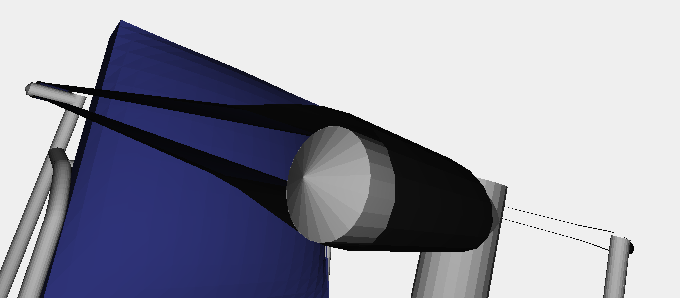Le Corbusier, Jeanneret, Perriand
Computational Graphic final-project 2012-2013
Student: Anastasiya Zadorozhna
Student ID: 418276
Le Corbusier the Architect. History.
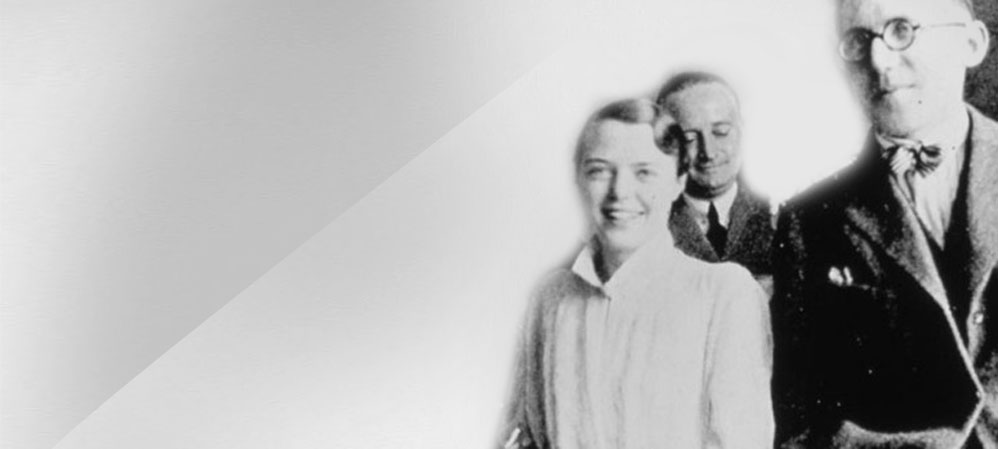
Charles-Edouard Jeanneret, Le Corbusier (October 6, 1887 - August 27, 1965).
Le Corbusier adopted his pseudonym in the 1920s, allegedly deriving it in part from the name of his ancestor (an altered form of his maternal grandfather's name, Lecorbésier), reflecting his belief that anyone could reinvent himself. His career spanned five decades and he is among the most important architects of the XX century. He was a pioneer in studies of modern high design and was dedicated to provide better living conditions for the residents of crowded cities.
Le Corbusier began experimenting with furniture design in 1928 after inviting the architect, Charlotte Perriand, to join his studio. His cousin, Pierre Jeanneret, also collaborated on many of the designs.
All the creations have an avant-gard attitude and the systems used are rational with extremly simple forms and shapes based on functional logic.
The work of the revolutionary thought of Le Corbusier is completed by Le Modulor. It was written during the Second World War and exposes the most impressive philosophical theory of the author. Le Modulor consists of a scale of magnitudes whose influences date back to the study of the proportions of the human body. This theory should be used not only in the construction of living spaces, but must be applied to every accessory: a shelf, a simple chair or a work of design.
The Project.
For each object I will describe some of the most significant components.
LC15 TABLE DE CONFÉRENCE
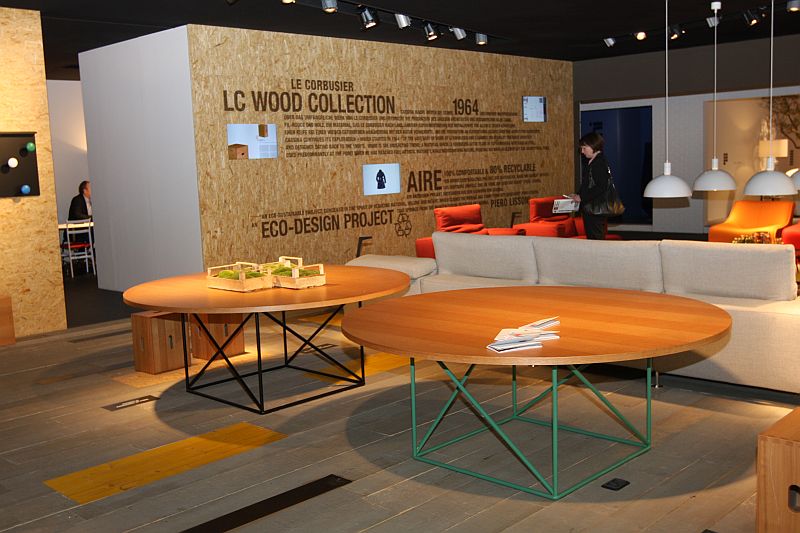
Year: 2010
Year of drawing: 1958
Collection: LE CORBUSIER
Le Corbusier designed this table in 1958 for Atelier Le Corbusier in Paris. It is intended for both home décor and conferences, with an organic structure that is also rational at the same time. This conference table is an exquisite masterclass in simplicity. The key to the project is the use of two geometrical figures set one against the other.
The circle is a sturdy horizontal tabletop in oak and the cube is made of steel tubes, which form a weave of perpendicular levels with outstanding aesthetic value. The top is available with a natural matte finish. Legs in lacquered steel in the LC colors (gloss grey, gloss green and matte black).
Ø 72.8" x h 28"
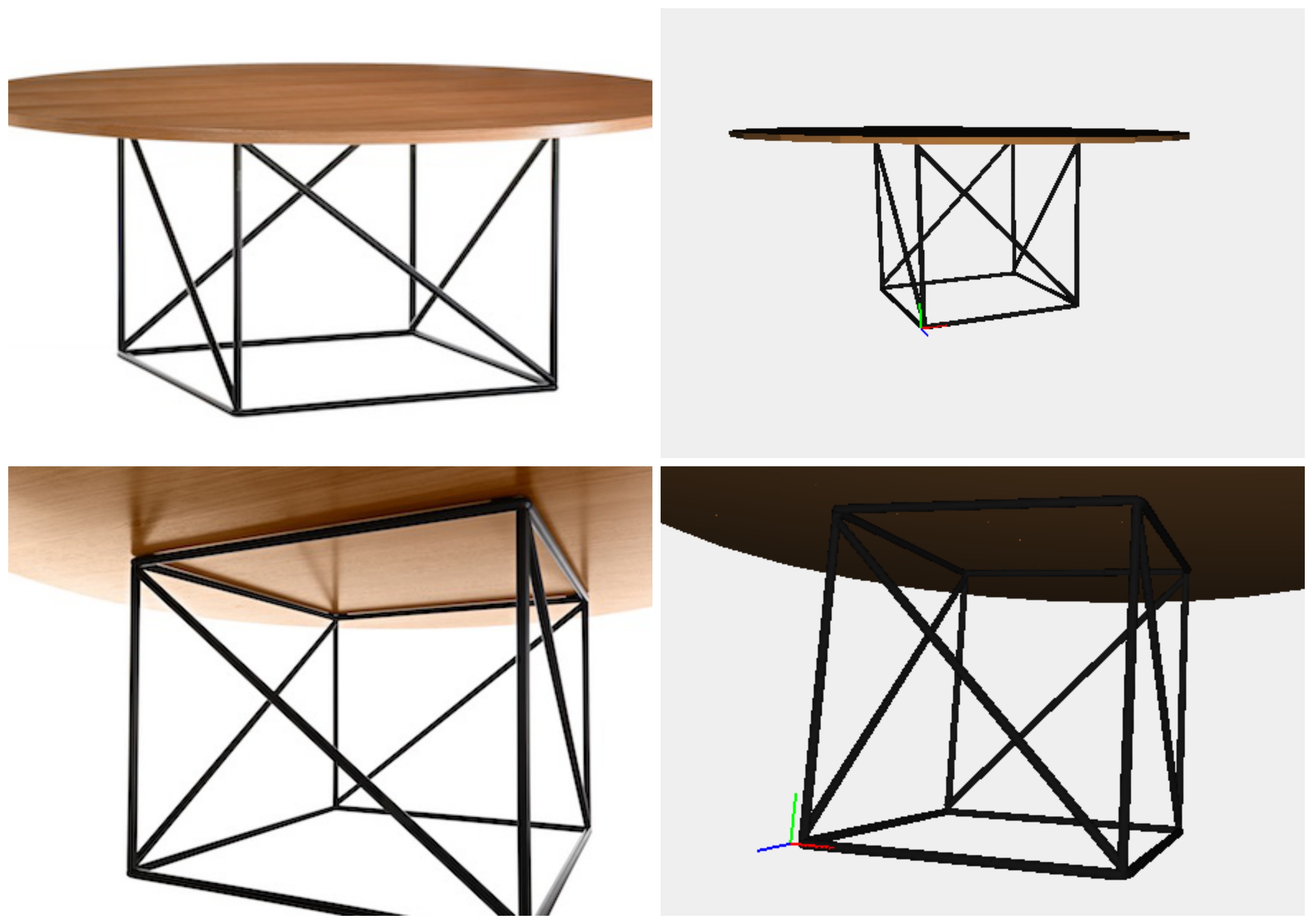
The functions used:
- cylinder
- CUBIC_HERMITE
- STRUCT
- T, R
- COLOR
The angles of the steel structure.
var curveMapping1 = CUBIC_HERMITE(S0)([[0,0,-0.5],[0.3,0,0],[0,0,0.75],[0.75,0,0]]);
var curveMapping2 = CUBIC_HERMITE(S0)([[0.2,0,-0.5],[0.3,0,-0.2],[0,0,0.25,],[0.25,0,0]]);
var curve1 = MAP(CUBIC_HERMITE(S1)([curveMapping1,curveMapping2,[0,0.39,0],[0,-0.39,0]]))(domain);
var curve2 = MAP(CUBIC_HERMITE(S1)([curveMapping1,curveMapping2,[0,-0.39,0],[0,0.39,0]]))(domain);
var curveLeft1 = STRUCT([curve1, curve2]);

Le Corbusier, Jeanneret, Perriand.
In 1922, Le Corbusier began working in the new rue de Sèvres, Paris, atelier with his cousin Pierre Jeanneret with whom he shared research projects and design criteria in a profound and life-long professional relationship. In October 1927, the pair decided to draw on the contribution of a young architect who had already begun to establish a reputation on the architectural scene of the time: Charlotte Perriand. Their collaboration lasted through to 1937 and was extremely fruitful, especially in the field of furniture design. The partnership was highly significant, both in terms of the cultural weight of their achievements and their professional successes. The resulting designs were of great intellectual value and considerable commercial success.
CASIERS STANDARD
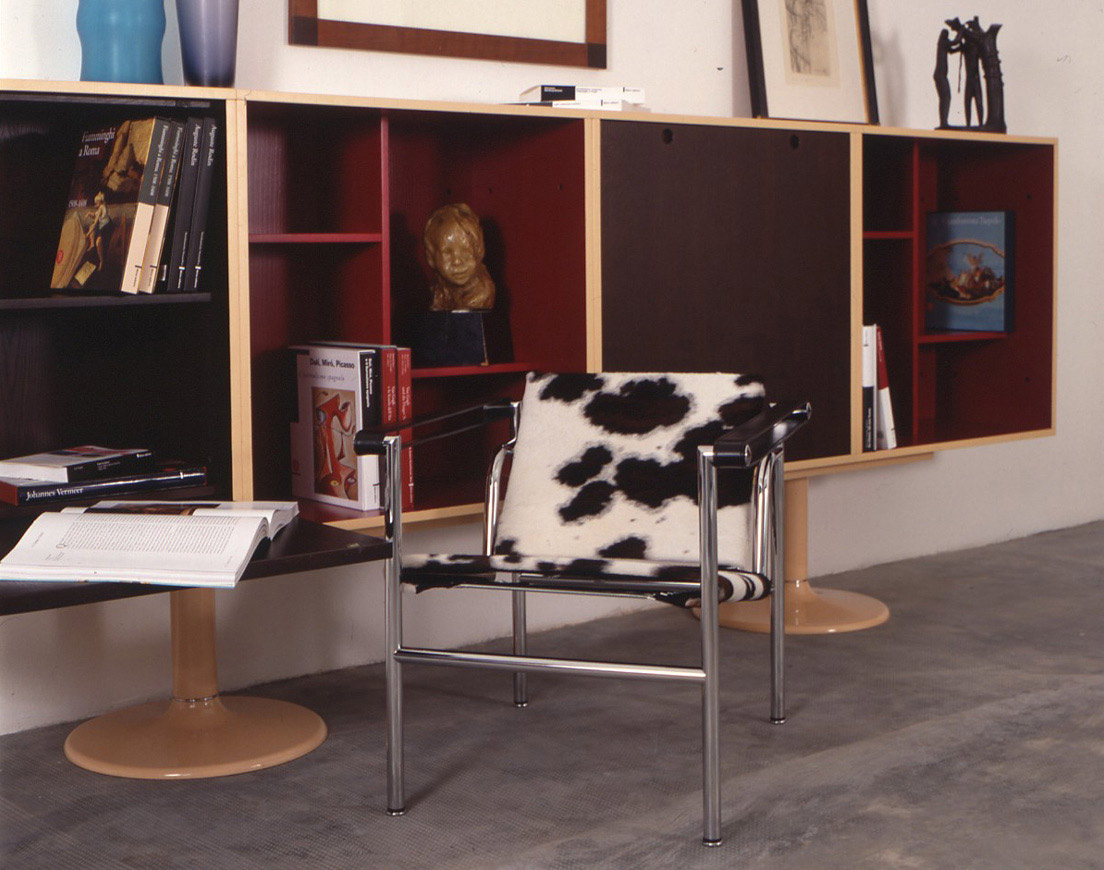
Year: 1978
Year of drawing: 1925
Collection: LE CORBUSIER
The "Casiers Standard" are modular container units, available in different depths and widths and in one height with possibility of superimposition.
Storage units are connected by screws to obtain multiple different configurations. Lay on the floor, overlapping each other or suspended on pilotis. Closed totally, partially or per day. Sliding doors, blinds vertical or horizontal flaps and upper or lower: all available in different colors.

The functions used:
- cylinder
- SIMPLEX_GRID
- STRUCT
- T, R
- COLOR
- BEZIER
- ROTATIONAL_SURFACE
- DISK
The support.
var c1 = COLOR(beige)(cylinder(0.25,1.3));
var c2 = cylinder(0.25,0.1);
var d2 = DOMAIN([[0,1],[0,2*PI]])([20,20]);
var profile = BEZIER(S0)([[0.25,0,0.5],[0.5,0,0.25],[1,0,0.25],[1.5,0,0]]);
var mapping = ROTATIONAL_SURFACE(profile);
var surface = MAP(mapping)(d2);
var disk = DISK(1.5)(16);
var support1 = STRUCT([T([0,1,2])([4.25,0.6,1])(R([1,2])(-PI/2)(c1)),T([0,1,2])([4.25,0.5,1])(R([1,2])(-PI/2)(c2)),
T([0,2])([4.25,1])(R([1,2])(-PI/2)(COLOR(beige)(surface))),T([0,2])([4.25,1])(R([1,2])(-PI/2)(COLOR(beige)(disk)))]);
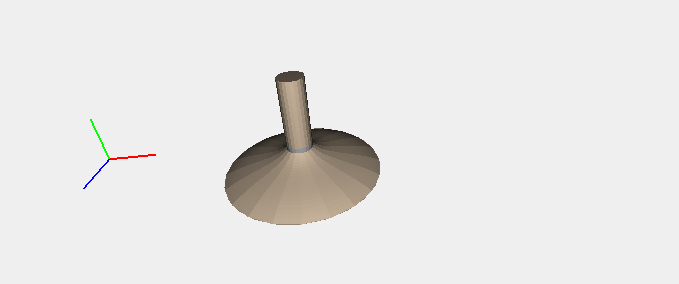
LC13
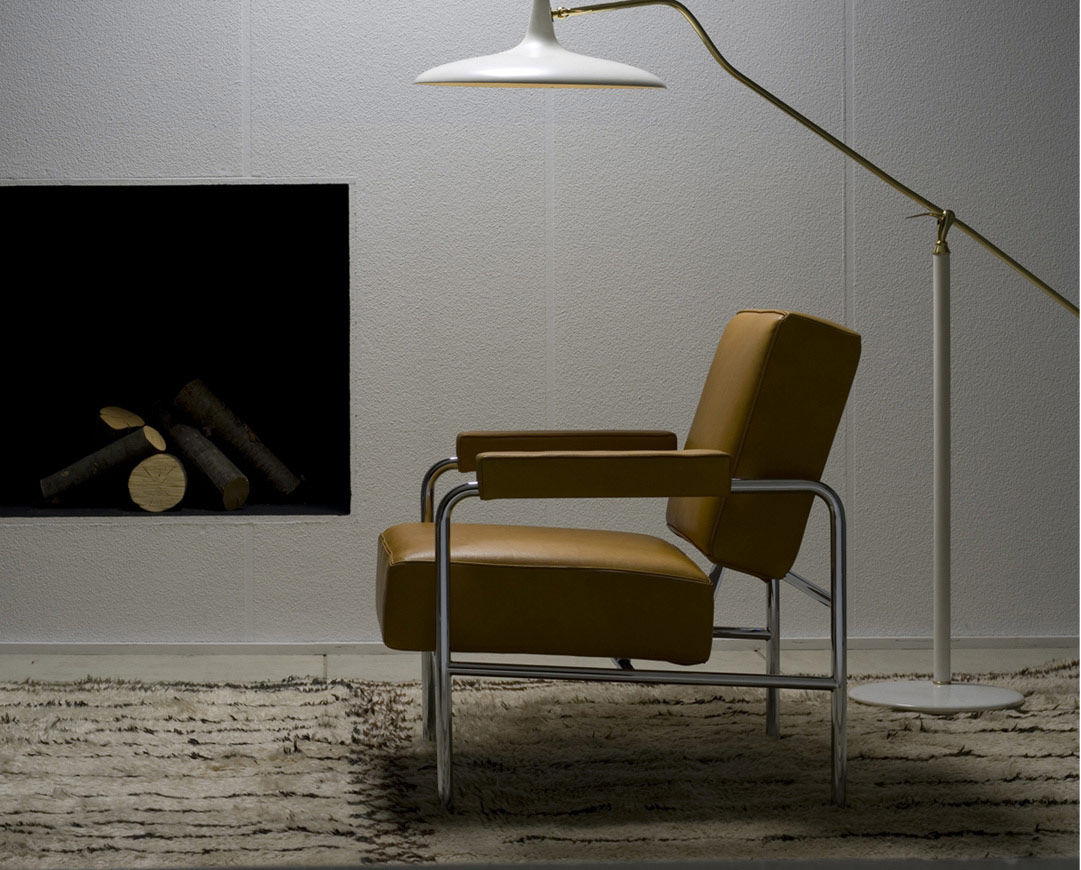
Year: 2006
Year of drawing: 1931
Collection: LE CORBUSIER
The design of this model was done by Le Corbusier in 1931 for the smoking carriages of the French railways.
The seat and back are not fastened down to the support structure. With a new link-up device the posture of the chair can be changed. Frame available in polished chrome.
A combination of polyurethane and polyester padding is used for thecushions.
Produced under license from the Foundation Le Corbusier and so indicated by a stamped signature and serial number on each model.
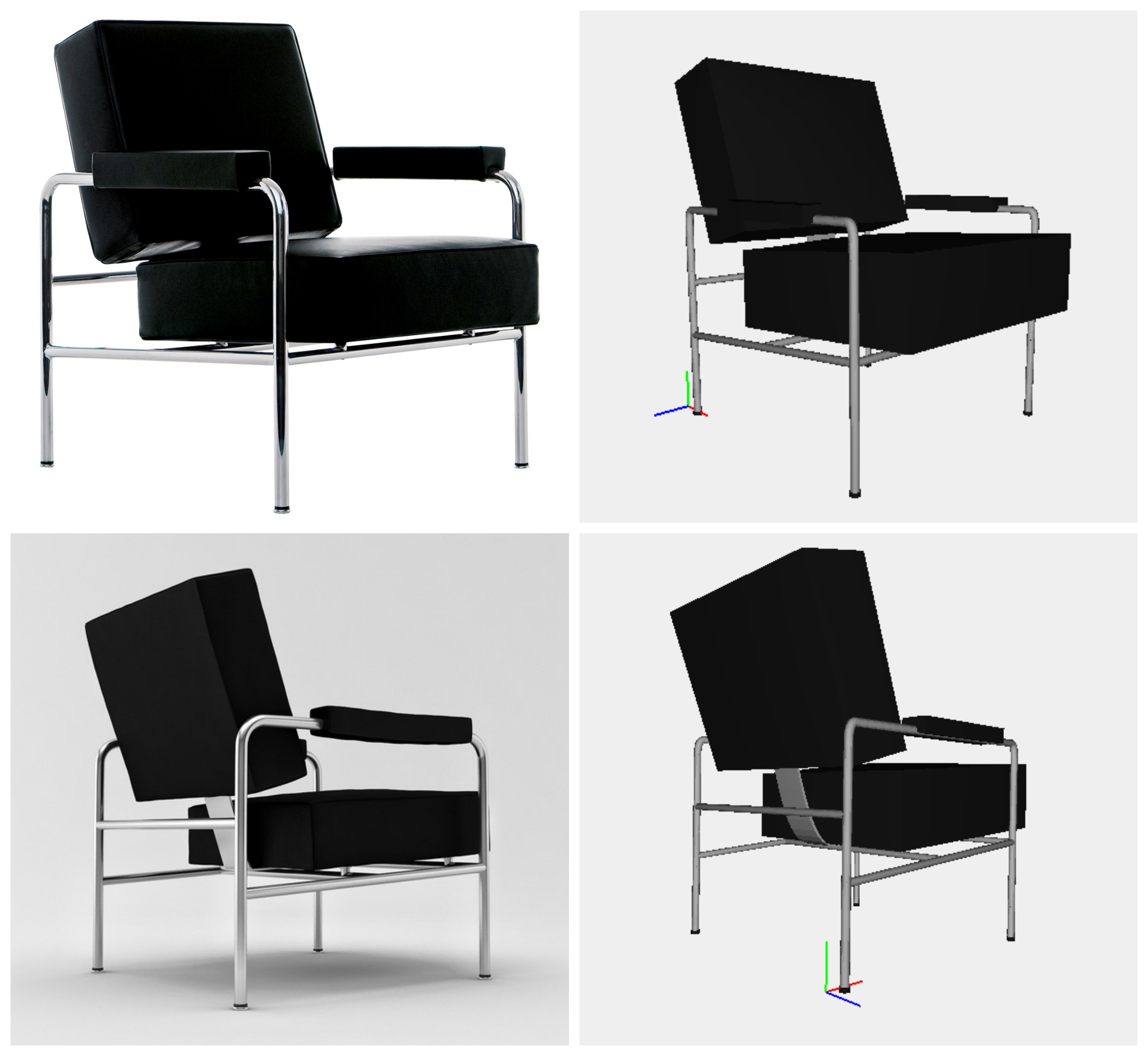
The functions used:
- cylinder
- CUBIC_HERMITE
- STRUCT
- T, R
- COLOR
- BEZIER
- EXTRUDE
- DISK
Pillow's support.
var c0support = BEZIER(S0)([[1.5,4.6,-3],[2.2,2,-3],[2.5,2.5,-3],[3.5,2.5,-3],[4,2.7,-3]]);
var c1support = BEZIER(S0)([[1.5,4.6,-4],[2.2,2,-4],[2.5,2.5,-4],[3.5,2.5,-4],[4,2.7,-4]]);
var curveSupport1 = MAP(BEZIER(S1)([c0support,c1support]))(domain);
var c2support = BEZIER(S0)([[1.55,4.6,-3],[2.35,2,-3],[2.5,2.55,-3],[3.5,2.55,-3],[4,2.7,-3]]);
var c3support = BEZIER(S0)([[1.55,4.6,-4],[2.35,2,-4],[2.5,2.55,-4],[3.5,2.55,-4],[4,2.7,-4]]);
var curveSupport2 = MAP(BEZIER(S1)([c2support,c3support]))(domain);
var curveSupport3 = MAP(BEZIER(S1)([c0support,c2support]))(domain);
var curveSupport4 = MAP(BEZIER(S1)([c1support,c3support]))(domain);
var supportStructure = STRUCT([curveSupport1,curveSupport2,curveSupport3,curveSupport4]);
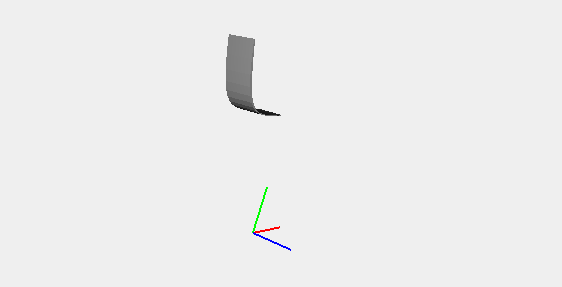
LC1 VILLA CHURCH
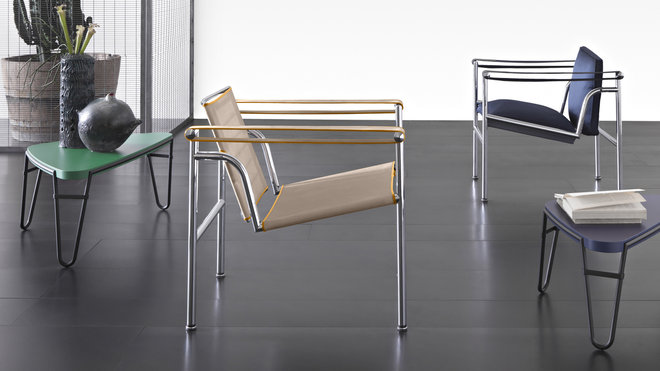
Year: 2011
Year of drawing: 1928-1930
Collection: LE CORBUSIER
The first version, dating back to 1928, was designed specifically for the interiors of Villa Church, a residence created by Le Corbusier and Pierre Jeanneret. The interiors, were designed by Charlotte Perriand who, with supreme delicacy, adapted the details and features of the various furnishings to suit the context of the space. In this case, as evidenced in Perriand's original sketches and notes, the LC1 seat is adorned with a blue satin weave and further embellished by its comfortable padding.
A satin weave is also chosen for the gently tapered armrests, except towards the front where leather is used to guarantee stability against the chrome-plated frame. An elegant interpretation in which the minimalism of the armchair is softened and given a gentler, more feminine feel.
The structure is in polished steel. The padded seat and backrest in polyurethane.
The armrests are wider at the front and tapered towards the back.
Produced under the license from the Foundation Le Corbusier and so indicated by a stamped signature and serial number on each model.
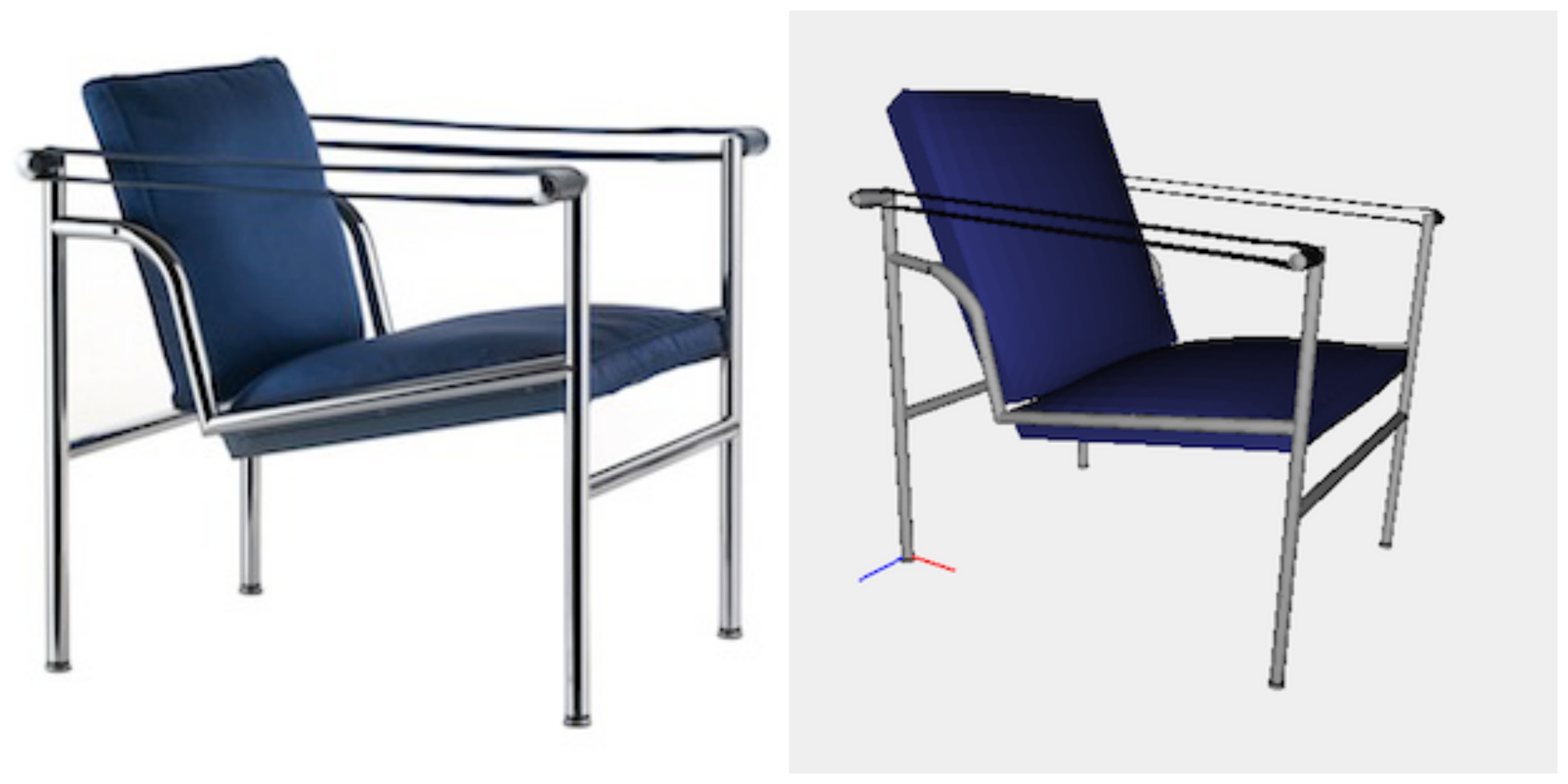
The functions used:
- cylinder
- CUBIC_HERMITE
- STRUCT
- T, R
- COLOR
- BEZIER
- ROTATIONAL_SURFACE
- DISK
- EXTRUDE
- POLYLINE
Peaks on the armrest.
var d2 = DOMAIN([[0,1],[0,2*PI]])([20,20]);
var profile1 = BEZIER(S0)([[0,0,0.05],[0.1,0,0]]);
var mapping1 = ROTATIONAL_SURFACE(profile1);
var surface1 = MAP(mapping1)(d2);
var profile2 = BEZIER(S0)([[0,0,-0.05],[0.1,0,0]]);
var mapping2 = ROTATIONAL_SURFACE(profile2);
var surface2 = MAP(mapping2)(d2);
var peakStruct = STRUCT([T([1,2])([5.65,0.6])(surface1),T([0,1,2])([6.5,5.65,0.6])(surface1),T([1,2])([5.65,-5.5])(surface2),
T([0,1,2])([6.5,5.65,-5.5])(surface2)]);
